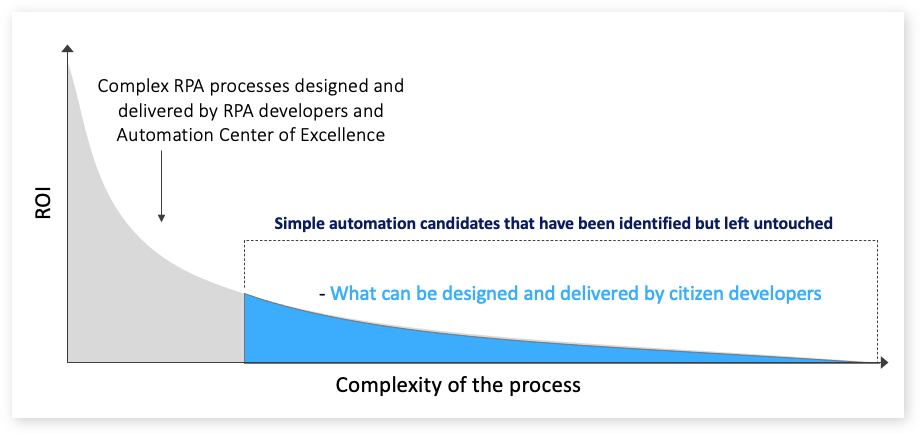5 RPA Resolutions to Keep for 2024
The new year is upon us, and even though many organizations are in the middle of their fiscals, a new calendar year always represents a fresh start to achieving lofty aspirations.
RPA (robotic process automation) initiatives and the objectives and goals automation leaders define are constantly evolving and subject to change.
Whether the following were already highlighted as objectives to be fulfilled by your automation practice at the beginning of your fiscal, these are 5 RPA resolutions you should keep for 2024 to reduce automation costs and maximize returns.
2024 RPA Resolutions
#1 – Reduce RPA’s Total Cost of Ownership
Reducing the total cost of ownership (TCO) for RPA is a mainstay on any automation practice’s list of annual objectives. However, the need to trim automation’s financial overhead is even more pronounced now than ever due to significant developments in the RPA marketplace.
2023 saw legacy RPA vendors significantly increase their costs, handcuffing many organizations to those platforms because of the traditional challenges around RPA migrations. With those challenges now removed due to technology providers offering cost-effective, automated RPA migration solutions, organizations are aggressively switching RPA platforms to a provider that makes much more financial sense and enables you to fulfill your aim of reducing RPA costs.
If you fall into this camp, discovering a provider that can facilitate your RPA migration at a price point you can stomach will enable you to shave significant dollars off your RPA OpEx (operation expense) to realize your goal of reducing automation’s total cost of ownership.
#2 – Migrate Your RPA Estate to Better, More Cost-Effective RPA Platforms
Tied to the previous RPA resolution for 2024, migrating to a better, more cost-effective RPA platform is definitely within the realm of possibility for this calendar year.
Significantly reducing automation TCO is as good of a reason as any, but it’s not the only benefit you can expect to realize. For example, migrating your RPA estate to Microsoft Power Automate, which offers some of the most competitive pricing in the market, also comes with other tremendous benefits.
By switching to Power Automate, your organization can also save money on automation infrastructure costs and leverage existing investments made with the Microsoft ecosystem of products that nearly all enterprises employ today anyhow.
Power Automate’s ease of use and familiarity with Microsoft’s intuitive UI also enables greater application of RPA across more of the business because less technically skilled employees can design and deliver simpler automations that contribute to scale.

In addition, when you embrace Power Automate, you also embrace the Power Platform that enables you to take automation beyond just RPA for greater ROI. If investigating new RPA platforms is on your 2024 resolutions list, we suggest starting with Microsoft Power Automate.
#3 – Improve RPA Governance with an RPA Center of Excellence
RPA governance is another area in which automation practices continually work hard to reinforce. There are several reasons that automation standardization and management need improvement that we’ve comprehensively covered in this blog, ranging from mergers and acquisitions, RPA practices starting at different times in different departments of the same organization, and RPA initiatives being implemented by third parties without leaving a governance model in place after their work is done.
According to Blueprint research conducted in 2023 on the State of RPA, only 50% of organizations have established an RPA Center of Excellence (CoE) to manage and govern their automation program. That means there are a lot of organizations out there that should have set up an RPA CoE as at least one of their RPA resolutions for 2024.
Even if you already have one, practicing the continuous improvement concept of Kaizen born in Japan is never a bad idea. 2024 should be the year you put your RPA Center of Excellence under the microscope to see if a different model can be applied or modifications can be implemented to increase efficiency and quality.
Learn More: A Cheat Sheet to Improve your RPA Center of Excellence (CoE)
As automation becomes more democratized and accessible to the average business user with AI-assisted technology like Microsoft Copilot and no-code/low-code platforms, a robust governance model is becoming more important than ever.
#4 – Assess Your RPA Estate
This resolution probably goes under the radar for many automation practices. In our conversations from the field, it’s become evident that many organizations don’t fully understand or know what they have in their RPA estate.
They don’t know how many automations they have, which are delivering value, which aren’t, where there are redundancies, where there is waste, and most importantly, where they could save money.
That’s why an RPA Assessment is so valuable and beneficial. It enables you to fully understand exactly what you have in your RPA estate and identify any redundancies that can be removed to reduce costs further. For example, one Blueprint client that performed an RPA Assessment before migrating their RPA estate to Microsoft Power Automate was able to decommission 30 out of a total of 100 automations and remove that massive overhead from expenses.
If performing an RPA Assessment isn’t on your RPA resolution list for 2024, it should be.
#5 – Enable RPA and Automate More Processes Across More of the Business
Achieving scale and applying RPA more broadly across the entire business was one of the top objectives research participants identified in Blueprint’s State of RPA in 2023 research report.
Scale and broad application are naturally constant RPA resolutions and will most likely appear on this list next year since the returns organizations see from their automation efforts are promising and lucrative.
For a detailed overview of the objectives automation practices are targeting in 2024, in addition to our projections for what’s to come in the automation space in the next 12 months, download our latest Ebook – Blueprint’s 2024 RPA Predictions & Objectives while it’s still available!
Share this
Recent Stories

The Top 7 RPA Trends of 2023

9 RPA Resolutions for 2022 That You Should Actually Keep




